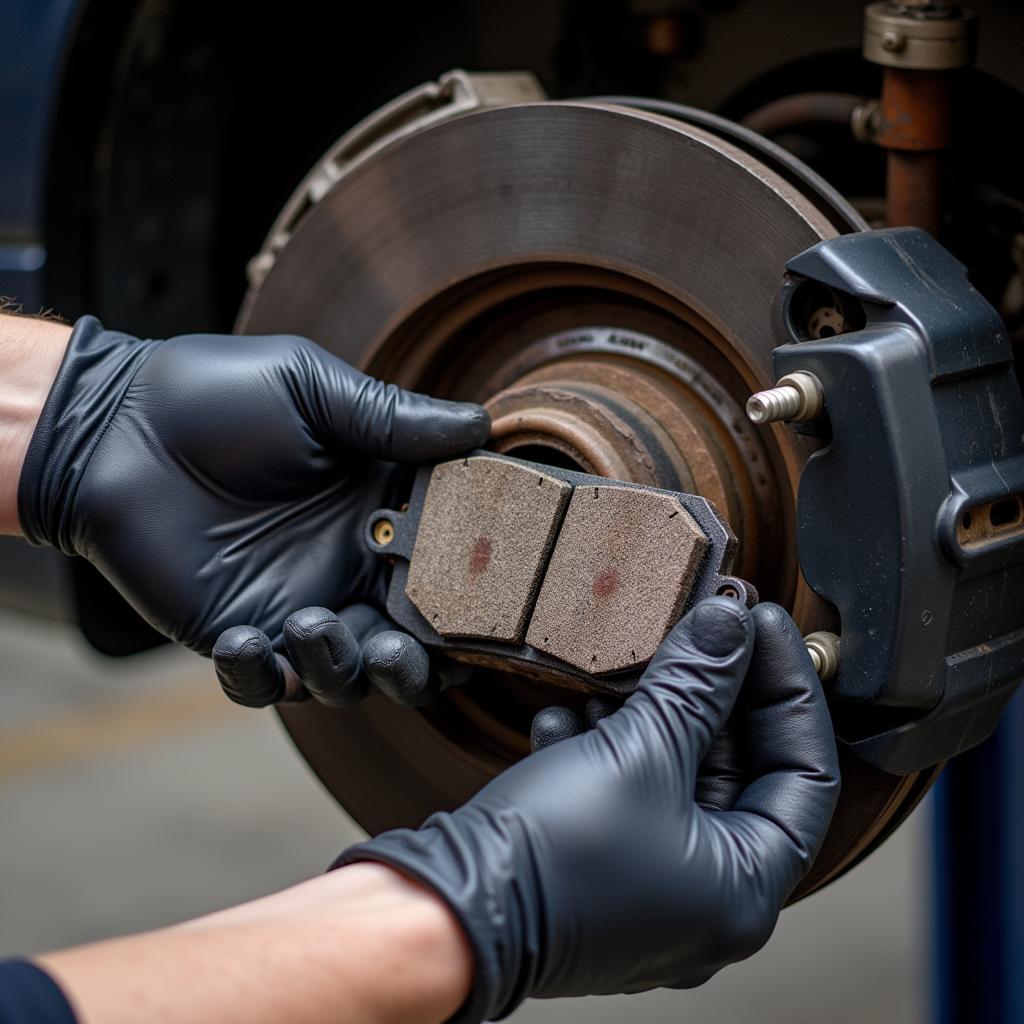The dynamic brake control warning light on your dashboard is a safety feature that can indicate a problem with your vehicle’s braking system. While it can be alarming to see any warning light illuminated, understanding what this specific light means and how to address it can save you time, money, and potential danger on the road.
Understanding Dynamic Brake Control
Dynamic brake control (DBC) is a system found in many modern vehicles that works in conjunction with anti-lock brakes (ABS) to provide optimal braking force during emergency situations. Unlike traditional ABS, which only prevents wheel lockup, DBC actively applies additional braking pressure when it senses the need for rapid deceleration. This is especially helpful when driving on slippery surfaces or during panic stops.
What Triggers the Dynamic Brake Control Warning Light?
The DBC warning light illuminates for various reasons, ranging from minor glitches to serious issues. Here are some common culprits:
- Faulty Wheel Speed Sensor: DBC relies heavily on wheel speed sensors to determine when and how much additional braking force is needed. A malfunctioning sensor can disrupt this process, triggering the warning light.
- Brake Fluid Issues: Low brake fluid levels or air in the brake lines can also interfere with DBC operation.
- Problem with the DBC Module: In some cases, the issue might lie within the DBC module itself. This could be due to a software glitch, electrical fault, or a failing component within the module.
- Other System Malfunctions: Occasionally, issues with related systems, such as the ABS or electronic stability control (ESC), can also trigger the DBC warning light.
What to Do When the Light Comes On
Seeing the DBC warning light doesn’t necessarily mean you need to pull over immediately. However, it does warrant attention. Here’s a step-by-step guide on what to do:
- Assess Your Driving Conditions: If the light appears while driving on a challenging surface like ice or snow, proceed with extreme caution. Reduce speed and avoid sudden maneuvers.
- Monitor Braking Performance: Pay close attention to how your brakes feel. Are they engaging as usual? Do you notice any unusual noises or vibrations?
- Schedule an Inspection: It’s crucial to get your vehicle checked by a qualified mechanic as soon as possible. They can properly diagnose the problem using specialized diagnostic tools.
Importance of Addressing the Issue Promptly
Ignoring the DBC warning light can have serious consequences. While your regular braking system might still function, its effectiveness during emergency situations could be compromised. Driving with a faulty DBC system puts you and other road users at risk.
“Dynamic brake control is a critical safety feature, especially in challenging driving conditions,” says automotive engineer and safety expert, Emily Carter. “Addressing any issues promptly ensures optimal braking performance when you need it most.”
Remote Diagnostics and Programming: A Modern Solution
In today’s technologically advanced world, remote diagnostics and programming offer convenient and efficient solutions for addressing DBC warning lights. Specialized technicians can remotely access your vehicle’s computer system to:
- Retrieve Diagnostic Trouble Codes (DTCs): These codes provide specific information about the nature of the fault within the DBC system.
- Analyze System Data: Real-time data from various sensors can be analyzed to pinpoint the root cause of the problem.
- Perform Software Updates: In some cases, a simple software update to the DBC module can resolve the issue.
Preventing Future DBC Warning Lights
While not all DBC issues are preventable, following these tips can minimize the risk:
- Regular Vehicle Maintenance: Adhere to your vehicle’s recommended maintenance schedule, including brake fluid flushes and inspections.
- Avoid Harsh Braking: Whenever possible, anticipate stops and brake smoothly.
- Address Warning Lights Promptly: Don’t ignore any warning lights on your dashboard. Early detection and resolution can prevent more significant issues down the line.
Conclusion
The dynamic brake control warning light serves as a vital safety indicator in your vehicle. Understanding its significance and addressing any underlying issues promptly is crucial for ensuring optimal braking performance and overall road safety. By staying proactive and seeking expert assistance, you can maintain a safe and enjoyable driving experience.
FAQs
Q: Can I still drive my car with the DBC warning light on?
A: While you might still be able to drive, it’s crucial to exercise caution and seek immediate inspection by a qualified mechanic. Driving with a potentially compromised braking system can be risky.
Q: How much does it cost to fix a dynamic brake control problem?
A: The cost of repair varies widely depending on the specific issue. Sensor replacements are typically less expensive than module repairs or replacements.
Q: Is dynamic brake control the same as anti-lock brakes?
A: While both systems work together, they serve different functions. ABS prevents wheel lockup, while DBC actively applies additional braking force for enhanced stopping power in emergencies.
Q: Can a low car battery trigger the DBC warning light?
A: While a low battery can sometimes cause warning lights to appear erratically, it’s essential to have the system diagnosed to rule out any genuine DBC issues.
Q: Can I fix the DBC problem myself?
A: DBC systems are complex and interconnected with other critical safety systems. It’s always recommended to consult with a qualified mechanic for diagnosis and repair.
This comprehensive guide provides valuable insights into the dynamic brake control warning light and equips you with the knowledge to handle this situation safely and effectively. Remember, prioritizing your vehicle’s maintenance and promptly addressing any warning signs are key to ensuring a safe and enjoyable driving experience.

